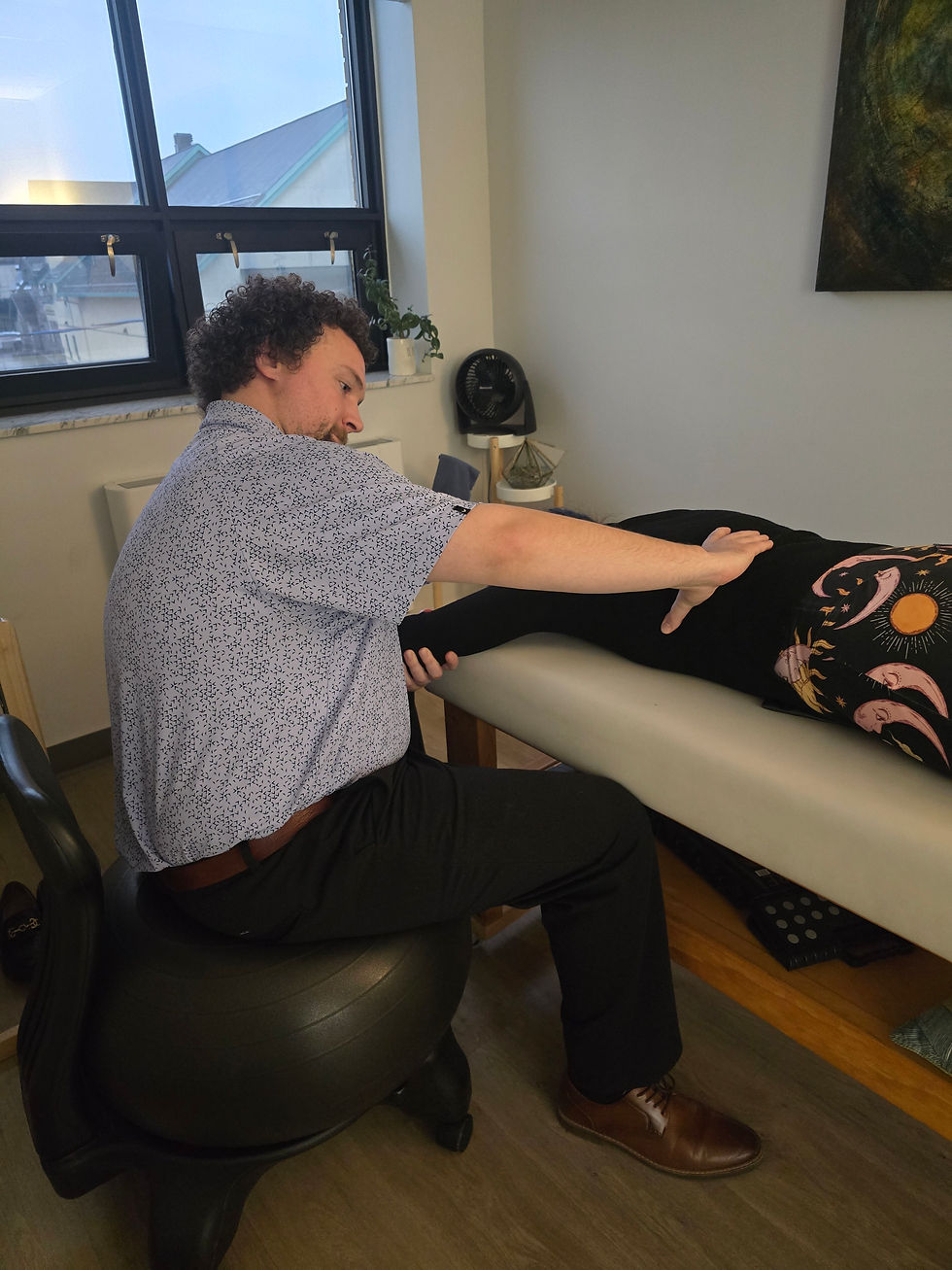Natural Support for Your Face Through Lymphatic Care
- Veronique Vallee
- Apr 15
- 3 min read

In the realm of osteopathy, the lymphatic system plays a crucial role in maintaining overall health by promoting the circulation of lymph, reducing inflammation, and supporting the immune system. When it comes to facial lymphatic drainage, osteopathic techniques can enhance the body’s natural detoxification processes, leading to improved skin health, reduced puffiness, and a sense of deep relaxation.
Understanding the Lymphatic System in the Face and Beyond
The lymphatic system is a complex network of vessels, nodes, and organs that work together to transport lymph — a clear fluid containing white blood cells, proteins, and waste products — throughout the body. Unlike the circulatory system, which relies on the heart to pump blood, the lymphatic system depends on body movement, breathing, and manual techniques to encourage fluid flow.

In the face and neck alone, there are several key clusters of lymph nodes, including:
Submental nodes – under the chin
Submandibular nodes – along the jawline
Parotid and preauricular nodes – near the ears
Postauricular nodes – behind the ears
Cervical lymph nodes – along the sides and back of the neck
These facial and cervical nodes are intricately connected to the deeper lymphatic structures of the body, particularly those in the thoracic region. Effective drainage in the face relies on the free movement of lymph through the neck and into the larger lymphatic trunks — primarily the thoracic duct and right lymphatic duct — which then return the fluid to the bloodstream.

A central structure in this system is the cisterna chyli, a sac-like reservoir located in the abdomen that collects lymph from the lower limbs, pelvis, and abdomen. From the cisterna chyli, lymph travels upward through the thoracic duct — the largest lymphatic vessel — before emptying into the venous system near the base of the neck. Any restrictions along this pathway, particularly in the abdomen and diaphragm, can impair the drainage process in the entire body, including the face.
This is why the diaphragms of the body — including the thoracic diaphragm, pelvic diaphragm, and the tentorium cerebelli (cranial diaphragm) — are so important in osteopathic treatment. These diaphragms act as key pumping stations and passageways for lymphatic flow. Ensuring that these areas are mobile and free of tension supports optimal lymphatic circulation and enhances the benefits of facial lymphatic drainage.
Benefits of Facial Lymphatic Drainage
Facial lymphatic drainage offers a range of benefits, including:
Reduction in puffiness and swelling – By enhancing lymph circulation, excess fluids and toxins are more efficiently drained, reducing facial bloating.
Improved skin tone and clarity – Better lymphatic flow means enhanced nutrient delivery to skin cells, promoting a healthy glow.
Enhanced relaxation and stress relief – Gentle, rhythmic techniques stimulate the parasympathetic nervous system, encouraging deep relaxation.
Support for sinus congestion and headaches – Lymphatic drainage can help reduce sinus pressure and alleviate tension headaches.
Osteopathic Approach to Facial
Lymphatic Drainage
Osteopathic practitioners use specialized techniques to facilitate lymph flow in the face and neck. These techniques are gentle, rhythmic, and non-invasive, aligning with the body's natural movement. Some of the key methods include:
Effleurage – Light, sweeping motions that stimulate lymph flow and encourage drainage towards the lymph nodes in the neck.
Gentle Pressure and Pumping Techniques – Targeting key lymph nodes to encourage movement of stagnant lymph fluid.
Fascial Release – Addressing restrictions in the connective tissue to improve overall lymphatic circulation.
Diaphragmatic Breathing – Encouraging deep breathing patterns to enhance whole-body lymphatic drainage.
Thoracolumbar Twist – A gentle osteopathic mobilization to help stimulate lymph flow from the lower body upward through the thoracic duct.
Arm Pumping, or Tapping – Light rhythmic movements that encourage lymphatic return from the extremities, aiding in whole-body drainage and helping to decongest the face.
Incorporating Facial Lymphatic Drainage into Your Wellness Routine
For those seeking to improve their facial lymphatic health, incorporating self-massage techniques at home can be beneficial. Using light pressure and upward strokes, particularly along the jawline and cheekbones, can promote drainage. One of my favorite tools for self-care is a Gua Sha, which helps to gently stimulate lymph flow, release facial tension, and enhance circulation. Hydration, movement, and mindful breathing also support the lymphatic system’s function.

For a more comprehensive approach, visiting an osteopathic practitioner can provide targeted and personalized lymphatic drainage techniques to address individual concerns. Whether you’re looking to enhance skin vitality, reduce puffiness, or support overall lymphatic health, osteopathic facial lymphatic drainage is a powerful and holistic tool for well-being.
If you’re interested in learning more about facial lymphatic drainage or experiencing the benefits firsthand, book a 45-minute appointment so we can focus the end of your treatment on your face.
Or, if you're looking for a deeper experience, consider joining my upcoming retreat , where we'll have a full workshop dedicated to facial lymphatics and self-care practices.
-Vero Osteo



Comments